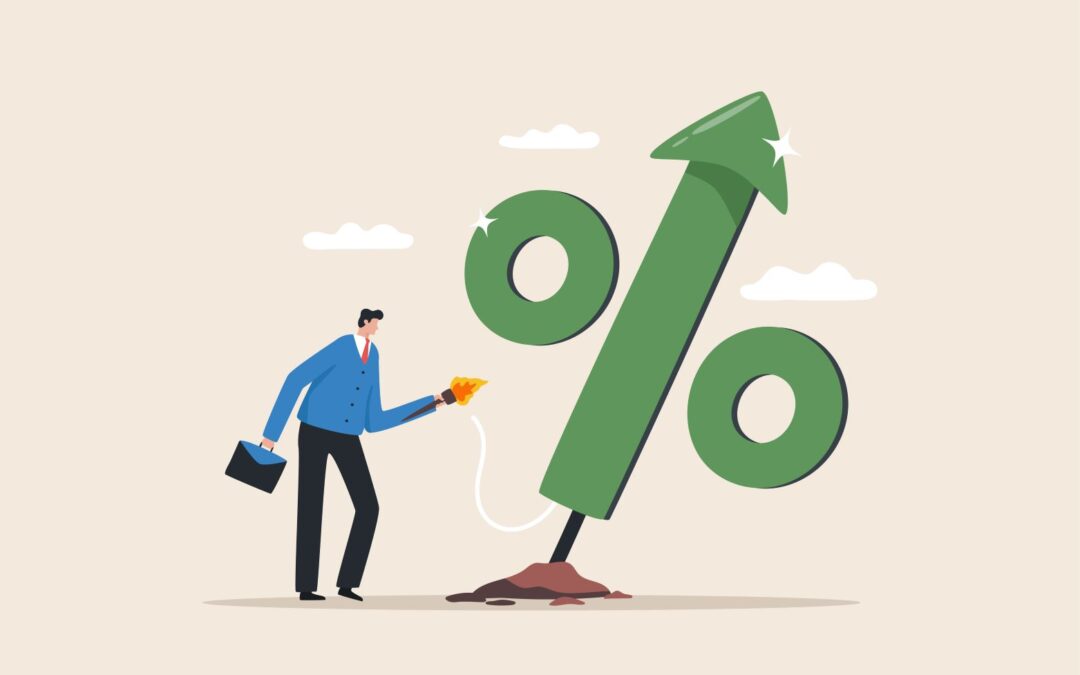As the risk builds of inflation rekindling in 2025 and 2026 views are changing about how far major central banks can cut official interest rates and at what pace. Comments last week by Federal Reserve Chairman, Jerome Powell, that there is no rush to cut the Federal Funds rate together with an indications that the inflation fight is not over from Bank of England Governor, Andrew Bailey, and our own RBA Governor, Michelle Bullock, pointing out that the Australian labour market is still very tight dampening further any hopes of an early rate cut are all pointing towards little leeway for interest rates to come down. So far, the guidance from these senior central bank officials has been about tempering market expectations about the size, timing and pace of future rate cuts, but the inflation outlook is changing and next year could halt rate cuts and even promote expectations of a new cycle of rate hikes in 2026 or 2027.
Government bond markets over the past three months have moved from expecting more than two percentage points of rate cuts over the next year or so from the peak of rates set by central banks to not much more than one percentage point. In the US, the 2-year bond yield has risen from 3.92% at the end of August to around 4.30% while over the same period the US 10-year Treasury yield has risen from 3.90% to 4.44%. In Australia, bond yields have risen more over the same period with the 2-year bond yield up from 3.66% to 4.16% and the 10-year yield up from 3.96% to 4.63%.
We flag possibility that these increases in bond yields in the US and Australia may need to go further from reflecting more limited scope for rate cuts to a possible halt to the rate cutting cycle in 2025 and potential for renewed rate hikes beyond.
This change to a higher bond yield outlook is a greater possibility for US bond yields than Australian bond yields, mostly because the risk of inflation basing before taking off again is higher in the US. The likely policy program of the Trump Administration taking office early in 2025 and including tighter control of immigration, greater tariff protection for US businesses and tax cuts and coming into force when the US economy has been growing above trend and with an already tight labour market generating strong real wage growth will rekindle inflation.
Recent US inflation readings are showing signs of stickiness with annual CPI inflation rising to 2.6% y-o-y in October from 2.4% in September and the core CPI stuck on 3.3% y-o-y in both September and October. Already, it looks like a struggle to get inflation down to the Fed’s 2.0% target and that is before the inflation-priming policy changes of the Trump Administration come into play in 2025.
If it starts to seem likely that US CPI inflation will begin rising through 3.0% y-o-y in the second half of next year, the Federal Reserve will need to halt rate cuts in the first half of 2025 and may not get the Funds Rate down to 4.00% before it needs to start hiking rates again possibly as early as in 2026. This US interest rate scenario would imply US bond yields pushing up above 5.00% in 2025.
In Australia, there is a growing risk that the RBA may need to leave the 4.35% cash rate in place much longer than current expectations of a first rate cut in May next year. The RBA’s problem is that inflation is unlikely to come down consistently inside 2-3% target band until the second half of 2026. It needs approaching economic reports and surveys over the next several months to indicate that their inflation forecast is on track to be able to consider cutting the cash rate.
On balance, recent data reports and surveys are not quite in line with their inflation forecasts. Business and consumer sentiment surveys have taken a stronger turn and may herald stronger private sector spending. Public sector spending already driving faster than the RBA expected previously is unlikely to slow with a Federal Election looming early in 2025.
The Australian labour market has stayed tighter for longer than the RBA expected and while annual wage growth receded to 3.5% y-o-y in Q3, a current flurry of wage disputes indicates annual wage growth may not go lower and could rise. And in any case very weak labour productivity means that wage growth at 3.5% y-o-y is too high to bring inflation down consistently within 2-3% band.
If anything, confidence is lessening that the RBA can get inflation back inside band by late 2026 especially when adding the knock-on effects to local inflation of President-elect Trump’s policy plans in the US.
One saving grace for the local bond yield outlook is that bond yields have backed up to near the current cash rate of 4.35% in the case of the 2-year bond yield and above in the case of the 10-year yield. Even if the cash rate stays at 4.35% throughout 2025 there is not much reason for bond yields to push up more unless the possibility gains traction of a new rate hiking cycle starting in 2026 or 2027.
In the US, a stickier and higher inflation outlook implies bond yields above 5.00% through much of 2025 and 2026. In Australia, bond yields around 4.50% or higher are likely for the same period in our view. The capacity to cut official interest rates further is becoming more limited in the US and in Australia the RBA may find it increasingly difficult to start cutting the cash rate.

